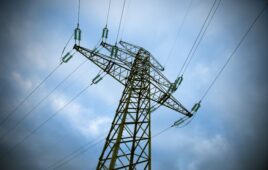Paula Mints is one of the top market researchers in the country whose insights are sharp and incisive. She is also the founder and chief market research analyst for SPV Market Research. In this post, she says there are ways for all armchair prognosticators to figure out whether the Investment Tax Credit (ITC) will be extended in 2016. You can read more of her insights at her blog, Notes From The Solar Underground.

Paula Mints is the founder and chief market research analyst of the global solar market research firm SPV Market. Research.
By Paula Mints, Special to Solar Power World
The U.S. Energy Budget answers the question about whether the 30% ITC will be extended or be reduced as planned to 10% by doing away with it altogether.
The U.S. government has spoken. Instead of extending the 30% ITC or allowing this crucial tax credit to decrease to 10%, it will be replaced at the end of 2016 with a refundable production tax credit, (PTC), which is based on electricity generated after the system is built.
In news that certainly does not make up for this action, the 2015 solar budget increased by 9.8% from $257.1 million in 2014 to $282.3 million in 2015.
From the budget:
FY 2015 funding supports the SunShot Initiative goal to achieve a cost of solar power of $.06/kWh to make solar power cost-competitive without subsidies by 2020. This includes solar photovoltaic R&D, activities that enable a 50% reduction in non-hardware “soft costs,” and development and demonstration of innovative solar energy manufacturing technologies to increase U.S. competitiveness, in support of DOE’s Clean Energy Manufacturing Initiative. FY 2015 funding also supports development of advanced thermal storage and supercritical CO2 power cycles so that concentrated solar power can achieve base-load grid parity.
While it’s gratifying to see renewed support for domestic manufacturing, it’s difficult to understand the U.S. government’s purpose in replacing the ITC with the PTC, nor are the significant downward expectations for the cost of solar electricity potential outcomes of which are abandoned systems, bankrupt systems and disappointed investors.
It’s possible that the U.S. government reasons that the installation cost is low enough currently to switch to a system that rewards output. It is unlikely that consideration was given to the potential consequences of this significant change, which range from business as usual (with only the well-heeled able to participate), to a rapid cessation in deployment.
The new plan throws support for solar deployment back into the laps of the states and does nothing to defray the capital costs of solar construction, which will most likely slow the market for solar in the United States. Before it slows, however, there will be a mad rush to complete projects before the deadline. Given the long development timeline for most projects, this means that some will not be completed by the deadline and will not be available for the ITC, having to settle for a PTC.
Want more? Try these articles:
Residential Solar Leases Are Encouraging Homeowners to Choose Solar





Hi Paula,
I won’t speak to whether the level of the incentives is appropriate, but I truly wonder whether the switch from ITC to PTC will stimey the U.S. solar market. Here’s why: while the current ITC credits adopters as a percentage of the upfront cost, the customers must still pay the total amount at point of purchase. Customers often finance this amount until they receive their federal credit, but capital costs are not immediately defrayed. This much will not change will the adoption of a PTC.
Will it mean that more solar customers will need to finance? Yes, likely, but that is and has already been the trend in markets where solar adoption has skyrocketed. I do not predict a significant decrease in the solar market as a result of switching from ITC to PTC. Now, that being said, the LEVEL of said PTC could determine the financial viability of solar in the market, and consequently, the industry’s success.
Best,
Lionel
Hi Paula: The PTC has been very useful in attracting tax equity capital to wind projects for decades. As grad students in the mid ’90s, our renewables project development class was taught how project finance worked by instructors working in the wind industry. First the wind developer places as much debt as they can and still meet the DSCR, then PTC-driven tax equity. If a construction loan is required, that can be worked in as well. At a high level, that sounds a lot like utility solar project finance. There are of course differences between the ITC and PTC, certainly the timing/chunkiness of the tax credits, each having pros and cons. However, I can’t agree that the PTC, “does nothing to defray the capital costs of solar construction”. Best, Mark